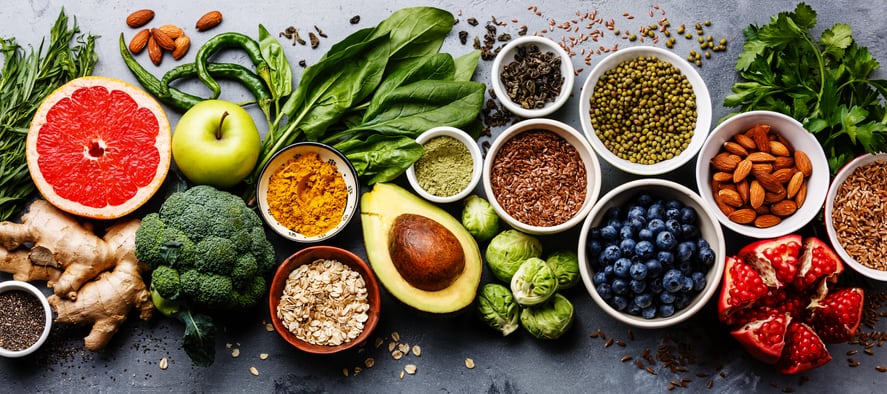Despite the fact that some 7,000 crops are edible and have been eaten by humans at some point, the majority of the world’s global energy intake comes from just three: rice, wheat and maize. The resulting monoculture is fuelling biodiversity loss on a massive scale.
What’s more, this lack of biodiversity is reflected in our decreasing dietary diversity and low-quality diets are a leading cause of non-communicable

diseases, such as obesity and type 2 diabetes.
However, food manufacturers can play their part by looking for nutritious and underused alternatives to the staples that currently dominate our farms and forks – and there is no shortage of species to choose from, according to Jessica Raneri, nutrition researcher at Bioversity International, a CGIAR research centre that promotes agricultural biodiversity to both “nourish people and sustain the planet”.
Raneri was part of a team of researchers that recently developed the Dietary Species Richness (DSR), an indicator that directly demonstrates the important of ingredient species richness to diet quality, Raneri explained.
By combining common measures of biodiversity to those of food biodiversity in the diet, the researchers a positive association between dietary diversity and nutrition adequacy that was consistent across the seven countries it studied.
A useful tool for food makers
Raneri said the open access and free-to-download indicator could “definitely” be used by the food industry to create healthier and more environmentally friendly food.
“Out of 1,097 cultivated vegetables, 93% are neglected in research, conservation and documentation,” she told FoodNavigator. “Within these species are millions of varieties that can improve nutrition, and have a low environmental impact. However, researchers, food companies and consumers often neglect these crops, which receive little in the way of research and development investment.
“More investment is required in a food system that produces nutritious foods and to shift the weight of funding towards a new generation of staple foods,” she added. “The food industry has the opportunity to diversify the different types of species and varieties to increase the nutritional content of diets, a higher species content being associated with more nutrient-dense diets.
“[It can also] promote the conservation of nutritious under-utilised foods that can have important roles to place in the environmental sustainability of food systems, particularly those that have climate-resilient traits.”
'Consumers care about this'
Pressure to move in this direction is also coming from the bottom up.
“Consumers are already increasingly caring more about where the products they buy come from, the nutritional value and how they are grown.”
If food manufacturers use the indicator to invest in more sustainable farming systems and add diverse ingredients to their products, their portfolio of better-for-you goods will be more attractive to consumers.
“To respond to market pressures and be able to grow more nutritious food on the same land base in an environmentally- and economically-sustainable fashion, farming systems will need to capitalize on agricultural biodiversity, which can boost productivity, nutritional quality and resilience.
Examples of ways in which companies can promote agrobiodiversity-friendly technologies and practices include investing in seed systems, diversifying sourcing and investing in producer support programmes, Raneri added.
Consumers, meanwhile, should look for seasonal fruit and vegetables; hunt out products that contain unfamiliar or unknown ingredients; and diversify the colour and types of foods from each food group on a daily basis.
The study
Although biodiversity is crucial to both human and environmental health, the DSR is the first indicator to measure the intricate relationship between food biodiversity and diet quality, its creators say.
The researchers analysed at food data for over 6,000 individuals in seven low and middle-income countries (Benin, Cameroon, the Democratic Republic of Congo, Ecuador, Kenya, Sri Lanka and Vietnam) and used mean adequacies of various micronutrients (vitamin A, vitamin C, folate, calcium, iron and zinc) as well as the diet diversity score (DDS) to assess diet quality.
“For every additional species consumed, dietary nutrient adequacy increased by 0.03. Diets with higher nutrient adequacy were mostly obtained when both species richness (SR) and DDS were maximal,” they wrote.
The researchers looked at the diets of rural populations in countries where locally produced food forms a major part of diets. However, they expect the DSR to still be a valid measure of food biodiversity in diets where processed foods feature heavily, they say, although further research is warranted.
Source: PNAS
“Dietary species richness as a measure of food biodiversity and nutritional quality of diets”
Published ahead of print 18 December 2017, doi.org/10.1073/pnas.1709194115
Authors: Carl Lachat, Jessica E. Raneri, Katherine Walker Smith et al.

